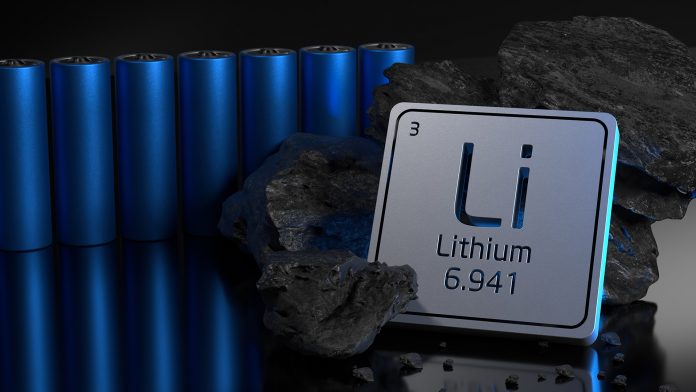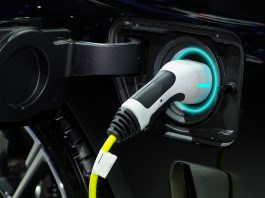Andrew Phillips, Executive Director and Chief Financial Officer of Lithium Power International, discusses the challenges facing the lithium market as lithium prices and demand soar and material costs climb.
Lithium prices have rallied strongly for more than 18 months now, and could stay high for some time as demand is forecast to remain high. There simply is not enough lithium to supply transport and energy storage demand for lithium-ion (Li-ion) batteries as the big switch away from fossil fuels accelerates.
While lithium supply continues to rapidly expand from new projects in countries like Australia, Chile and Argentina, demand is moving at a faster clip. Not enough projects are being built to keep up, even as lithium prices continue to soar. The US has recently acted to finance and speed up developments at home and abroad, but that will take years to fully bear fruit.
Can lithium supply meet demand?
Scaling up new technologies can create huge issues. Before carbon fuels were outcast, lithium was regarded as a niche mineral. It is now a critical component for rechargeable batteries; a required element in cathodes through which electric current enters the cells. Demand is expanding at a rapid pace, and that is expected to continue for some years as the world switches to clean electric energy. Miners, manufacturers, transporters, financiers, governments, and industry are working together to rid the world of oil, coal and gas emissions. It will take a while to achieve that goal, but there is a growing acceptance that the world faces catastrophic temperature changes unless fossil fuels are replaced. But the transition confronts considerable hurdles. According to Benchmark Mineral Intelligence, its lithium price index had risen by 182.6% year-on-year as of mid-December 2022. That means cleaning the world from polluting energy sources is becoming much more expensive.
Benchmark’s CEO, Simon Moores, recently posted three pertinent facts on Twitter about lithium’s growth. Firstly, battery tonnage has grown by an order of magnitude in eight years, from 70GWh to 700GWh. Secondly, more batteries have been added to output each year since 2020 than were produced in 2019. Thirdly, for governments to meet their goals of net zero carbon emissions, the pace of change to 2050 needs to be five times greater. The world is experiencing enormous changes in energy demand seldom experienced before in modern times.
S&P Global, a supplier of intelligence to global markets, reinforces these predictions. It recently published a research report, titled ‘Lithium project pipeline insufficient to meet looming major deficit’, which suggests that a deficit could emerge as soon as 2024. Even if the 53 lithium mining projects, costing an estimated $37.8bn, currently in the post-preliminary economic assessment pipeline were aggressively developed, the market would still face a deficit of 605,000 tonnes by 2030. Argentina has most of those new projects, with 14, whilst nine are in the US and seven are in Canada. The world is now realising the scope of the challenge that lies ahead.
Automakers are responding by locking in long-term lithium contracts to ensure that they can meet demand from mining companies. They realise that a reliance on free-wheeling commodity markets is too risky. Many believe that the only sure way to ensure volume is to secure close partnerships along the supply chain. Douglas Parks, Executive Vice President of Global Product Development, Purchasing and Supply Chain at General Motors (GM), told investors in November that early investments made by his company to expand its development teams and infrastructure were paying off. He said that GM’s new Ultium battery architecture was the key for its success.
Parks stated: “It is neither a battery cell nor a pack, but a propulsion architecture, and is designed to quickly and economically build a complete portfolio of electric vehicles (EVs). The platform allows us to continue to innovate battery technology. GM has secured binding agreements to secure the battery raw materials to support one million units of annual capacity in North America by 2025. We’ve actually locked them in with binding contracts: an agreement with Livent for lithium hydroxide from its North American facility, and a strategic investment and commercial collaboration with CTR to source lithium from the Salton Sea in California using a closed loop, geothermic process.
“It’s worth pointing out that our new approach on raw materials encompasses the full life cycle of those materials, from extracting to recycling, and turning those materials back into new battery cells. We’re focussed on driving this circularity in our EV supply chain, and we’re working to incorporate recycled EV materials in our batteries. This is not just good for the planet, it’s good for business. It will reduce costs, help increase and localise our battery supply chain and lower dependence on raw material extraction.”
Why are costs rising?
For its part, Livent warns that lithium prices could continue to rise. Chief Financial Officer, Gilberto Antoniazzi, does not see any downturn in demand or pricing in 2023, adding that conversations with buyers had moved away from prices to security of supply.
Antoniazzi said: “We want to make sure that the customer is absolutely vested on using our product that we’re reserving for them. That’s the genesis of our agreement with GM. We receive a reservation fee or prepayment of $200m. It creates more of a partnership, a true partnership as opposed to a simple commercial relationship. I think this will be more and more of the norm.”
Customers were already signalling they would take product from Livent next year, meaning that the tension in lithium prices should last for some time.

There are challenges also for new, nimble EV makers. BYD has made a strong start in its home market of China, and recently announced ambitious plans for Europe and Japan where it is little known by auto buyers. There is speculation, however, that it will build vehicles in two new centres in Europe. The company is becoming known by auto owners in these markets thanks to the export Chinese-built EVs. Executive Vice President, Stella Li, told Bloomberg recently that it would buy its own ships to export EVs to Europe, ahead of completing the factories. It plans to release two luxury sub-brands as part of this push, one focused on sporty cars and the other on SUVs. But there is a tell-tale that rising lithium prices could soon squeeze EV makers’ ambitious plans.
Battery prices have declined each year since 2010, according to data provider Bloomberg NEF. But it recently warned that trend had changed in 2022. The weighted average cost increased by 7%, despite a switch to cheaper battery inputs, such as iron and phosphate. Battery makers had hoped that, by reducing the use of lithium, cobalt and nickel, they could protect their margins. But there has still been a considerable variation in prices, by region and by application. In China, for instance, average prices were $127 per kWh, whereas battery packs in the US and Europe were higher by 24% and 33%, respectively.
Hopes are that average prices could ease by 2026. However, Bloomberg NEF says it is not worried, because the cost of making vehicles using internal combustion engines was also rising. It has examined the strategies being adopted by leading automakers to keep their EV production costs under control. There are marked differences in each plan. Tesla, renowned for its EV innovation, said that it expected to have a large 3TWh of in-house battery output capacity by 2030, and would use new, unified prismatic cells via a dry coating manufacturing process and a high nickel LFP cathode. VW plans for 240GWh of output in 4680 cells and LFP cathodes. GM’s Ultium cells will use a pouch design and nickel, manganese, and cobalt chemistry. Numerous factors determine the best approach for each automaker, including whether they are focusing on compact passenger vehicles, pick-up trucks, road trains or other niches of the auto industry, along with which countries they are supplying.
Other groups are yet to reveal their strategies. Toyota, for instance, has long followed a hybrid approach, featuring small internal combustion engines alongside electric motors in its Prius models. Recently, however, it has been reported that it would announce in February plans to challenge EVs sold by the likes of Tesla and BYD. Reuters reported that the new strategy involves boosting the development of technologies, including electric drive systems, motors, battery storage systems and heating/cooling systems. But Toyota president Akio Toyoda was recently quoted in The Wall Street Journal as saying the silent majority of people in the auto industry were wondering whether it was “really OK” to have EVs as a single option. The group says it will produce EVs along with a diverse range of autos, including hybrids and hydrogen cars.
Please note, this article will also appear in the thirteenth edition of our quarterly publication.









